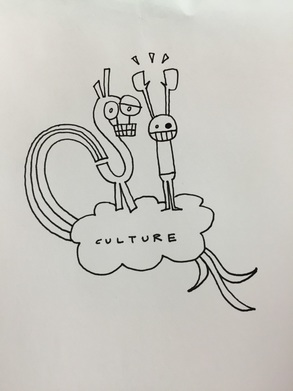|
by Jon Isaacson Risk of failure is a constant - if there is no risk of failure than there is no challenge and likely no reward worth pursuing. The biggest risk is not taking any risk... In a world that changing really quickly, the only strategy that is guaranteed to fail is not taking risks. Mark Zuckerberg  Overcoming the fear of failure in the pursuit of growth Overcoming the fear of failure in the pursuit of growth As a follow up to our more extensive treatment of the fear of failure and the practice of personal risk management in the pursuit of growth covered HERE, we share the highlights of how to overcome fear. The psychological term for immobilization due to morbid fear of failure or the unfortunate is called atychiphobia. Are you atyciphobic? If you are pursuing something that is worthwhile and has the potential for a reward on effort (ROE), then you understand there is no avoidance of risk of failure. You may fear failure, you would be stupid not to, but that fear should not be allowed to be the presiding factor in whether to do or not do something. Failure is a reality. As a risk factor fear is a speed bump that causes evaluation, but failure by itself is not final unless it is allowed to be. Failure is a part of the growth process that causes smart organizations and individuals to learn while they weave through obstacles in the pursuit of vision expansion. A fork in the road should be a call to identify risk, resource options and develop creative solutions rather than pull the emergency break to freeze all momentum. You are a smart person, so don't be stupid - you know that positive results are not guaranteed. Every risky venture is a growth adventure and the process will lead us as an organization or individual to learn from the process. The likelihood that we arrive at the destination in precisely the manner as planned is unlikely. A smart process that takes on risk in the pursuit of growth must include adaptation. Our process, like a vehicle in motion, is easier to steer and adjust as we go. Don't be like the atyciphobics who are still parked in the "safety" of the garage, too afraid to take on the risk that will lead to adventure. Whether for fear of failure or as a protective measure, inaction is often the greatest risk as it will certainly lead to a negative result. Jon Isaacson is a freelance writer assisting organizations to translate their mission and vision into story. I am a business practitioner who specializes in employee engagement, systems optimization and business development with creative solutions that are grounded in practical applications. In addition to working full time, raising a family and volunteering, Jon writes, speaks and serves as director of local facilities networking group LFMC.
0 Comments
By Jon Isaacson The question is not whether our organization has a culture the question is whether our culture has evolved by chance or because we have been intentional in developing it (more on business culture HERE).  If our goal is to have a healthy and thriving team, culture becomes a key component of caring for the organization. If we can identify, build and staff around a culture that enhances our values then our combined efforts will have greater focus and potency. The development of a culture becomes, through the process, a component of attracting, caring for and retaining good team members. In short, take care of the culture because the culture is what cares for our people. If we care for our people, our team members will be enabled and energized to care for our customers. In service based companies, our people on the ground and in the field are the ones who have the bulk of the hands on interaction with our customers. Team members that are cared for will care about the team and will do work that communicates care on through to our clientele. Caring for our culture is one of the most effective things we can do as leaders because the culture is what takes care of our team member who in turn are the ones caring for our clients. Our culture is unique and our people are unique so the culture is always evolving as we develop. The end goal is the same, create positive customer experiences so that our combined efforts create value that people will gladly pay for. All companies need dollars in order to function at every level, but we often forget that at the end of the line those dollars come from people (customers) that care. People that care come from people that are cared for (our team members). Therefore being intentional about caring is one of the most profitable areas we can focus our efforts. Culture is not a unicorn. Culture is a gold mine. Jon Isaacson is a friend to facilities and risk professionals, partnering to enhance education, networking and assisting with recovery when the worst of it all hits the fan. While in college, the young Jon responded to an ad in the local paper for carpet cleaning and discovered the world of property restoration. Continuing the pattern of mentorship taught to him, Jon has built his business acumen growing organizational strength through professional relationships, employee development and process improvement. In addition to working full time, raising a family and volunteering, Jon writes, speaks and serves as director of local facilities networking group LFMC. by Jon Isaacson Are you a property restoration technician sketching the affected areas for a water and/or fire damaged structure? Are you a construction estimator diagramming a floor plan for your next project? Are you an adjuster assessing an insurance claim? Our latest skills development video will entertain as well as educate you with tools, tips and tricks for construction based sketching. Jon Isaacson is a friend to facilities and risk professionals, partnering to enhance education, networking and assisting with recovery when the worst of it all hits the fan. While in college, the young Jon responded to an ad in the local paper for carpet cleaning and discovered the world of property restoration. Continuing the pattern of mentorship taught to him, Jon has built his business acumen growing organizational strength through professional relationships, employee development and process improvement. In addition to working full time, raising a family and volunteering, Jon writes, speaks and serves as director of local facilities networking group LFMC. The sketch is the foundation for communicating the details from field personnel that translate into a well written mitigation recap and a profitable mitigation billing. For disaster restoration the sketch is also essential to composing an insurance compliant estimate for repairs. While every insurance carrier is unique in their standard operating procedure (SOP) requirements and usually have a third party administrators (TPA) who oversee compliance between carriers and contractors, they all consistently utilize the sketch as the basis for communication, estimate and scoping. In the insurance world the details are the most valuable commodity in composing and defending a scope that will release the dollars that the hard work of your team deserves. There is great value in knowing and excelling in the key areas relevant to the broadest range of programs.
This video serves as our first in a series of personal, professional and career development videos that are geared for helping with tools, tips and tricks related working within the insurance, restoration and construction industries. Regardless of where you are in your career our instructional videos will entertain as well as educate you. We can help the newly hired technician to understand and develop their skills in mastering the recap of work performed. We can help the seasoned construction estimator to dial in the details that will assist them in creating consistently approved estimates. We can help the insurance professional to communicate the expectations of the trade that will assist all parties in clarifying details and closing files expediently. The tools for sketching are simple, something to write on, to write with and to take measurements:
The tips for sketching are simple as well
The tricks for sketching
We train our teams that if you didn’t write it down or take a photo – it didn’t happen (which consequently is the same rule that insurance carriers will use when reviewing your estimate and project details). As a team we need to understand that when working within insurance industry that our ability to communicate the details are as important as our ability to perform the work. To that end, the sketch is the foundation of communicating the loss details, establishing an emergency services plan, tracking the restoration process, composing a profitable mitigation estimate, defending our billing, drafting a thorough repairs estimate and carrying a project through to completion. Whether you are new to the process or need a refresher, our instructional video series will help you develop your skills in these areas, stay tuned for additional videos. By Jon Isaacson
Risk management belongs at the leadership table but cannot be the boot that keeps the wheels of growth from turning, rather it must be a component of the decision making process while we continue driving down the road of progress. On the road of opportunities there is always risk. Where there is no risk there is no growth. When we discuss risk, often the underlying or unspoken component an organization is facing is the fear of the unknown. When risk is substituted for fear, the decision making process will stall out with inactivity that will result in missed opportunities. Risk management is a broad and misunderstood (or misapplied) discipline, there are three risks factors that every organization and individual should concern themselves with as they are the primary vision killers for driven entities. Those three vision and growth killers are – risk of failure, exposure and/or success. When a team assesses risk and establishes plans for mitigation of risk they are engaging in productive discussions, conversely if we substitute risk for fear those same conversation become even more dangerous than the risks we are trying to avoid. Risk of failure. There is always risk of failure, but fear of failure should never be the deciding factor when engaging an opportunity for growth. Failure is a reality. As a risk factor fear is a speed bump that causes evaluation, but failure by itself is not final unless it is allowed to be. Failure is a part of the growth process that causes smart organizations to learn while they weave through obstacles in the pursuit of vision expansion. When fear of failure immobilizes there is a psychological term for this, atychiphobia which translates as morbid fear of failure or the unfortunate. A fork in the road should be a call to identify risk, resource options and develop creative solutions rather than pull the emergency break to freeze all momentum. Positive results are not guaranteed, but all adventures will lead an organization to learn from the process whether the results were achieved as intended or through adaptation. A vehicle in motion is easier to steer than a vehicle that stays on the lot. Whether for fear of failure or as a protective measure, inaction is often the greatest risk as it will certainly lead to a negative result. Risk of exposure. When an organization or individuals have driven past the speed bumps that are laid out by the fear of failure the next level of detractions are those that arise as points of exposure on the road of action. Exposure is a reality. Fear of exposure is nonsensical when it leads to sheltering rather than exploring. A vehicle on the lot may be safer than a vehicle in motion but the sedentary vehicle will eventually deteriorate in place resulting in the same death without the experience of reaching its potential. Opportunities like vehicles were meant to be driven not to live a sheltered life wondering what if. Fear of exposure leading to inaction is a greater risk than exposure itself for businesses and individuals. Risk management is an important factor in growth, but the assignment is not to keep all the cars safe and sound in the garage, rather proper application leads an organization to keep as many cars running safely and with purpose as possible. Risk of success. Some won't want to admit it, but if psychology has identified a phobia for failure there is a yin to that yang in the fear of success which holds many frozen in reaching their potential. This fear of achieving a goal is often on the unconscious level but is so prevalent in life and business that the term many have coined is achievemephobia. Abraham Maslow is credited with referring to this symptom as The Jonah Complex which refers to the prophet in the Old Testament who successfully assisted the city of Nineveh to turn themselves around but pouted about the result and thus did not experience joy or realize his full potential. There are those who allow fear to prevent them from engaging in the hunt and there are those who are in the hunt but are afraid of losing that thrill or of what they will do if they reach their destination. What do we do if it works? Teams need diverse skill sets in developing resources that can identify opportunities, pursue growth as well as those that can manage the positive and negative consequences of those activities as the process unfolds. Risk management is intertwined in the growth process as the road twists and turns. So, how does an organization or individual incorporate risk into their vision and growth planning? The basics of risk 1) Assessment - what the is the opportunity and what are the potential risks in relationship to the pursuit of that opportunity? A simple formula for calculating risk is to start with the end, by this an organization or individual will calculate the worst case scenario and then from there determine whether the potential reward is worth the effort. If the parties involved can survive the worst case scenario, then effort should be made to pursue the opportunity while being mindful of the risks. 2) Planning - once it is determined that the worst case scenario is survive-able, the fear of risk is effectively nullified and it's time to compose a plan that will enable pursuit of the opportunity. Planning would include identification of hazards, hazard mitigation and response parameters related to action steps. Smart operations are not oblivious to risk nor do they sweep them under the rug, they make them visible and work for progress without allowing fear to deter them from the goal. 3) Action - much is made of risk, but as was previously mentioned fear of failure and/or fear of success may be the biggest underlying obstacles to personal as well as professional growth. The homework has been done, the map has been laid out to the best of everyone's abilities, it's time to get the wheels of opportunity moving. Action may lead to unexpected forks in the road but inaction will only lead to the eventually demise of having a fork stuck in your operation. Risk management is not meant to curb all activities and put a boot on the engine of opportunity. Risk management should be a process in the decision leading to opportunity identification, growth mapping and the celebration of a job well done. Risk management is essential because growth is essential and there is no growth without some level of risk. Risk does not stop the engine, it guides the vehicle safely through the obstacle course of growth and vision. ---- Jon Isaacson is the director for Local Facilities Manager's Connection (LFMC-localfacilities.com) which is a peer-to-peer networking group started in Eugene, Oregon. Jon has been working in business development, systems optimization and team building with organizations large and small for nearly 15 years. He has been writing, speaking and assisting teams with creative business solutions, helping those organizations bring their vision into reality. |
AuthorThoughts on personal and professional development. Jon Isaacson, The Intentional Restorer, is a contractor, author, and host of The DYOJO Podcast. The goal of The DYOJO is to help growth-minded restoration professionals shorten their DANG learning curve for personal and professional development. You can watch The DYOJO Podcast on YouTube on Thursdays or listen on your favorite podcast platform.
Archives
March 2023
Categories
All
<script type="text/javascript" src="//downloads.mailchimp.com/js/signup-forms/popup/unique-methods/embed.js" data-dojo-config="usePlainJson: true, isDebug: false"></script><script type="text/javascript">window.dojoRequire(["mojo/signup-forms/Loader"], function(L) { L.start({"baseUrl":"mc.us5.list-manage.com","uuid":"b9016446bd3c6a9f0bd835d4e","lid":"83282ffb9e","uniqueMethods":true}) })</script>
|
Jon Isaacson |
Connect. Collaborate. Conquer.
© COPYRIGHT 2015. ALL RIGHTS RESERVED.
|



 RSS Feed
RSS Feed